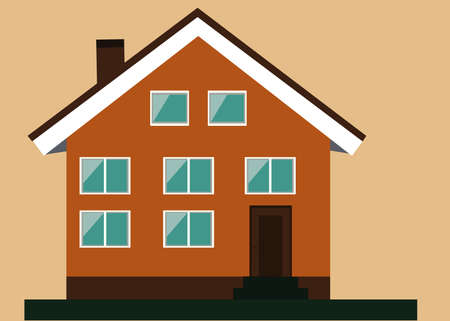1. Understanding the Importance of Outdoor Lighting
Outdoor lighting does much more than just make your home look pretty at night. While it certainly adds charm and highlights architectural details, its true value goes beyond aesthetics. A well-lit exterior can improve home safety, discourage potential intruders, and create a warm, inviting atmosphere for both residents and guests.
Enhancing Home Safety
Proper outdoor lighting helps prevent accidents and injuries around your property. Pathway lights, porch lights, and motion-sensor lights ensure that steps, walkways, and entrances are clearly visible after dark. This is especially important for families with children or elderly members who may be more prone to trips and falls.
Common Areas That Benefit from Lighting:
| Area | Recommended Lighting |
|---|---|
| Front Porch | Wall-mounted sconces or ceiling fixtures |
| Driveway | Floodlights or motion-sensor lights |
| Walkways | Low-voltage path lights |
| Staircases | Step lights or recessed lighting |
| Backyard & Patio | String lights or landscape spotlights |
Deterring Intruders
A well-lit property is a strong deterrent for would-be intruders. Criminals are far less likely to target homes that are illuminated because the risk of being seen increases dramatically. Motion-activated lights near entry points such as doors, windows, and garages can startle intruders and alert homeowners to activity outside.
Creating a Welcoming Environment
The right lighting can make your home feel cozy and inviting. Whether its soft lighting along a garden path or warm porch lights that greet visitors, outdoor lighting sets the tone for hospitality. It also extends your living space, making patios and decks enjoyable even after sunset.
Quick Tip:
Use warm white bulbs (around 2700K–3000K) for a cozy feel, and cooler tones (4000K–5000K) in areas where visibility is key, like driveways or garages.
Outdoor lighting is an essential part of home design that blends form with function. By focusing on safety, security, and ambiance, you can transform your homes exterior into a space thats both beautiful and practical.
2. Types of Outdoor Lighting and Where to Use Them
Outdoor lighting does more than just brighten up your yard—it helps boost your home’s curb appeal and adds a layer of safety and security. To make the most of your outdoor space, it’s important to understand the different types of outdoor lights available and where they work best around your property.
Pathway Lighting
Best for: Walkways, driveways, garden paths
Pathway lights are low-level lights that line sidewalks and paths to help guide foot traffic safely. These fixtures not only prevent tripping hazards but also create a welcoming atmosphere when guests arrive. Solar-powered options are popular for their easy installation and energy efficiency.
Accent Lighting
Best for: Landscaping features, architectural details, trees, statues
Accent lighting highlights specific elements in your yard or on your homes exterior. These lights are typically softer and focused, helping draw attention to unique features like a fountain, tree, or textured wall. Spotlights and well lights are common choices for this purpose.
Flood Lighting
Best for: Driveways, backyards, garages, entry points
Flood lights provide broad, high-intensity illumination over large areas. They’re ideal for boosting security by eliminating dark spots around your home where intruders might hide. Motion-sensor flood lights are especially effective for deterring unwanted visitors.
Deck and Step Lighting
Best for: Decks, patios, stairs, railings
This type of lighting is installed directly into deck boards or along steps to increase safety and add ambiance. It creates a cozy setting for outdoor gatherings while also helping prevent accidents at night. LED strip lights and recessed step lights are popular choices.
Quick Reference Table: Outdoor Lighting Types & Uses
| Type of Light | Main Purpose | Best Used In |
|---|---|---|
| Pathway Lighting | Safety & Guidance | Walkways, Garden Paths |
| Accent Lighting | Aesthetic Highlighting | Trees, Statues, Walls |
| Flood Lighting | Security & Wide Coverage | Driveways, Entry Points |
| Deck/Step Lighting | Safety & Ambiance | Stairs, Patios, Railings |
Tips for Placement:
- Avoid Overlighting: Too much light can be harsh—aim for balanced coverage with layered lighting.
- Select Warm Light Temperatures: For residential exteriors, warm white (2700K–3000K) offers a cozy feel.
- Add Timers or Smart Controls: Automate your lighting schedule to save energy and enhance security.
Selecting the right combination of outdoor lighting types can transform the look of your home while keeping it safe. Consider what you want each area to achieve—whether its guiding guests safely to your door or spotlighting your favorite landscaping feature—and choose accordingly.

3. Design Tips to Maximize Curb Appeal
Outdoor lighting isn’t just about visibility—it’s about creating an inviting and stylish look that enhances your home’s curb appeal. Here are some practical design tips to help your home shine after dark.
Layer Your Lighting
Layering is a key principle in outdoor lighting design. It means combining different types of light sources to add depth, dimension, and interest to your exterior spaces. Use a mix of ambient, task, and accent lighting to create a well-balanced look.
| Lighting Type | Purpose | Examples |
|---|---|---|
| Ambient | General illumination | Wall sconces, hanging porch lights |
| Task | Functional lighting for specific activities | Pathway lights, step lights |
| Accent | Highlight architectural or landscape features | Spotlights, uplights, well lights |
Use Warm Light Tones
Warm white light (between 2700K and 3000K on the Kelvin scale) creates a cozy and welcoming atmosphere. Avoid overly cool or bluish tones—they can make your home appear harsh or uninviting. Soft warm tones are especially effective for highlighting entryways, patios, and garden areas.
Highlight Architectural Features
Your homes unique architectural elements—like columns, stonework, trim, or arches—deserve to be seen at night. Use directional spotlights or wall washers to draw attention to these details without overpowering them. This not only boosts visual interest but also adds a custom-designed feel to your exterior.
Quick Tips for Highlighting Architecture:
- Uplighting: Place fixtures at the base of columns or walls to cast light upward.
- Sidelighting: Position lights on either side of an entryway or garage door for symmetry.
- Crosslighting: Use two fixtures aimed at the same feature from different angles to reduce shadows.
Create Focal Points
A good outdoor lighting plan includes one or two focal points that immediately draw the eye—like a well-lit front door, a dramatic tree, or a water feature. These focal points give structure to your lighting layout and help guide visitors’ attention where you want it most.
Pro Tip:
If youre using multiple fixtures in one area, keep the style and finish consistent for a cohesive look. Bronze and black finishes are popular for their timeless appeal and versatility with most exteriors.
A thoughtful lighting design not only improves safety but also makes your home more attractive and inviting after sunset. By using layers of light, sticking with warm tones, and emphasizing your homes best features, youll boost curb appeal effortlessly.
4. Security Lighting Best Practices
Outdoor lighting doesnt just make your home look great—it also plays a key role in keeping it safe. By following a few simple best practices, you can improve your home’s security and give yourself peace of mind, especially at night.
Install Motion-Sensor Lights
Motion-sensor lights are one of the most effective tools for outdoor security. They turn on automatically when movement is detected, surprising potential intruders and alerting you to activity around your property. Here are some tips for getting the most out of them:
- Placement: Install motion sensors near all main entry points, including front and back doors, garage entrances, and side gates.
- Height: Mount lights about 6 to 10 feet high for optimal coverage and to avoid tampering.
- Sensitivity Settings: Adjust the range and sensitivity so the lights don’t trigger unnecessarily (like from small animals or tree branches).
Illuminate All Entry Points
A well-lit entrance deters unwanted visitors and makes it easier for you to come and go safely at night. Focus on these areas:
| Entry Point | Recommended Lighting Type | Why It Matters |
|---|---|---|
| Front Door | Wall-mounted sconces or overhead fixtures | Makes it easy to identify visitors and find keys |
| Back Door | Motion-sensor floodlights | Deters intruders who often target less-visible areas |
| Garage Door | Overhead spotlights or integrated lighting with motion sensors | Improves visibility when parking or entering your home from the garage |
| Side Gates/Pathways | Low-voltage path lights or motion-activated step lights | Helps prevent tripping hazards and alerts you to movement |
Avoid Dark Spots Around Your Property
Burdensome shadows or unlit corners can create hiding spots for intruders. Walk around your property at night to identify any dark zones. Here are some ways to eliminate them:
- Add Spotlights: Use directional spotlights to brighten trees, fences, or sheds that may provide cover.
- Use Path Lighting: Light up walkways and driveways to reduce blind spots and improve navigation.
- Layer Your Lighting: Combine different types of lighting (ambient, task, and accent) for thorough coverage.
Choose the Right Bulbs for Security Lighting
The type of bulb you use affects brightness, energy usage, and longevity. Heres a quick comparison:
| Bulb Type | Lifespan (Hours) | Energy Efficiency | Best For |
|---|---|---|---|
| LED | 25,000–50,000 | High | All-purpose outdoor security lighting |
| CFL | 8,000–10,000 | Moderate | Sconces or porch lights with covered fixtures |
| Halogen | 2,000–4,000 | Low–Moderate | Spotlights where intense brightness is needed briefly |
Tie It All Together with Smart Controls
If you want even more control over your outdoor lighting setup, consider smart lighting systems. These allow you to set schedules, adjust brightness remotely, and receive alerts when motion is detected—all from your smartphone. Many systems integrate with popular platforms like Alexa or Google Home for added convenience.
A thoughtful security lighting plan not only protects your home but also enhances its appearance during nighttime hours. With the right combination of lights and strategic placement, you’ll create a safer environment for your family while boosting your curb appeal.
5. Energy-Efficient and Smart Lighting Solutions
When it comes to outdoor lighting, energy efficiency and convenience go hand in hand. Today’s technology makes it easier than ever to light up your yard, driveway, or porch while keeping your electricity bill low and your home smarter. Let’s take a look at how LED lights, solar-powered fixtures, and smart home integrations can make your outdoor lighting setup both eco-friendly and user-friendly.
LED Lighting: Long-Lasting and Cost-Effective
LEDs (Light Emitting Diodes) are a popular choice for outdoor lighting thanks to their durability and energy efficiency. Compared to traditional incandescent bulbs, LEDs use up to 75% less energy and can last up to 25 times longer. They also come in various styles and brightness levels suitable for everything from pathway lights to floodlights.
| Lighting Type | Average Lifespan | Energy Use | Best For |
|---|---|---|---|
| Incandescent | 1,000 hours | High | Temporary setups |
| Halogen | 2,000 hours | Moderate | Spotlighting |
| CFL | 8,000 hours | Low | Pendant or wall lights |
| LED | 25,000+ hours | Very Low | All outdoor applications |
Solar-Powered Fixtures: Free Energy from the Sun
If you want a completely off-grid solution, solar-powered lights are a great option. These fixtures charge during the day using sunlight and automatically turn on at dusk. Theyre perfect for illuminating pathways, gardens, or driveways without needing any wiring.
Benefits of Solar Lighting:
- No electricity costs—uses renewable solar energy.
- No wiring needed—easy to install anywhere with direct sunlight.
- Dusk-to-dawn sensors—automatically turns on when its dark.
The key is placement: make sure they get enough sun during the day for optimal performance at night.
Smart Outdoor Lighting: Control at Your Fingertips
Add convenience and control with smart outdoor lights that can be managed through apps or voice assistants like Alexa, Google Assistant, or Apple HomeKit. Whether you want to schedule lights to turn on before you get home or adjust brightness remotely, smart lighting makes it possible.
Main Features of Smart Outdoor Lights:
- Scheduling: Set timers based on your daily routine.
- Dimming: Adjust brightness levels as needed.
- Motion Detection: Lights turn on when movement is detected—great for security.
- Zoning: Control specific areas separately like the backyard vs. front yard.
You can even integrate them with other smart home devices like cameras or doorbells for added security and automation.
A Smarter Way to Light Up Your Home Exterior
Merging energy-efficient technologies with smart features not only saves money but also adds style and safety to your homes exterior. With the right combination of LED, solar-powered, and smart lighting solutions, you’ll enjoy a well-lit space that’s both beautiful and functional—without wasting energy or effort.


